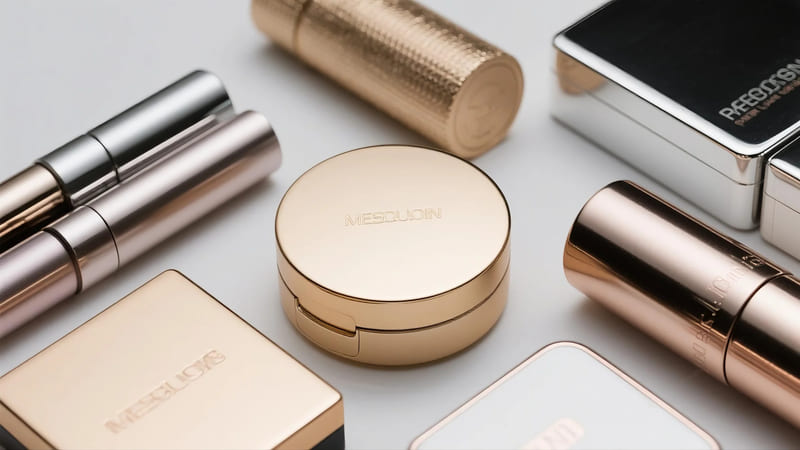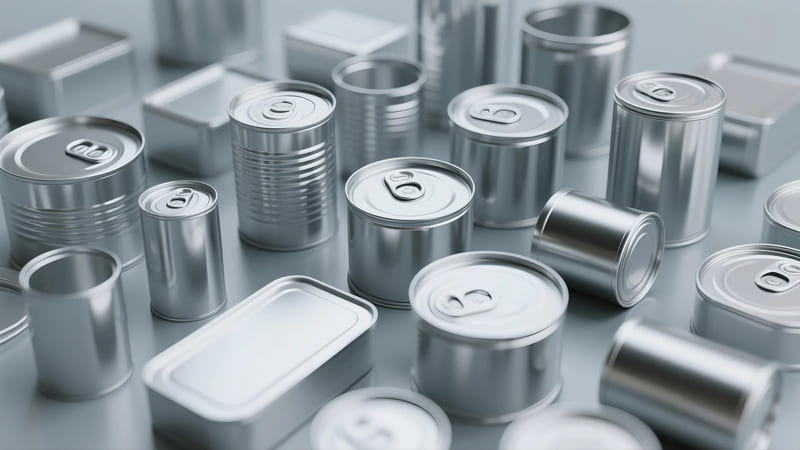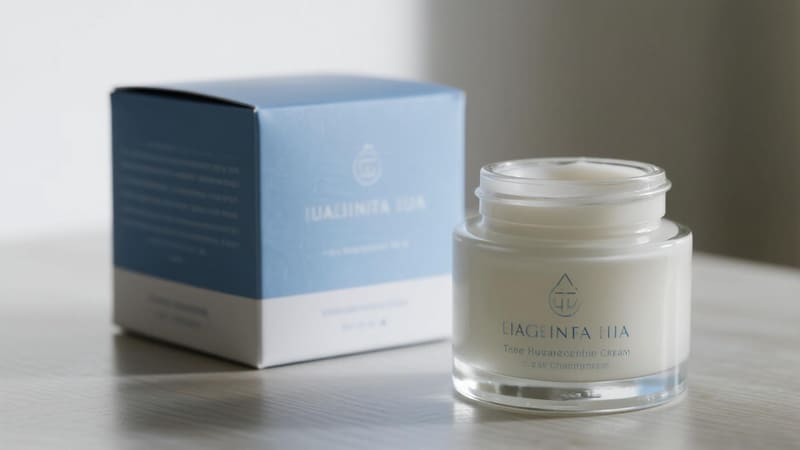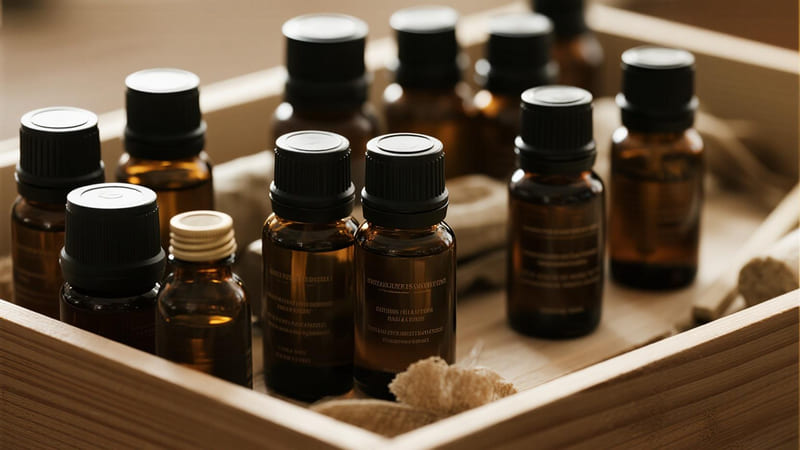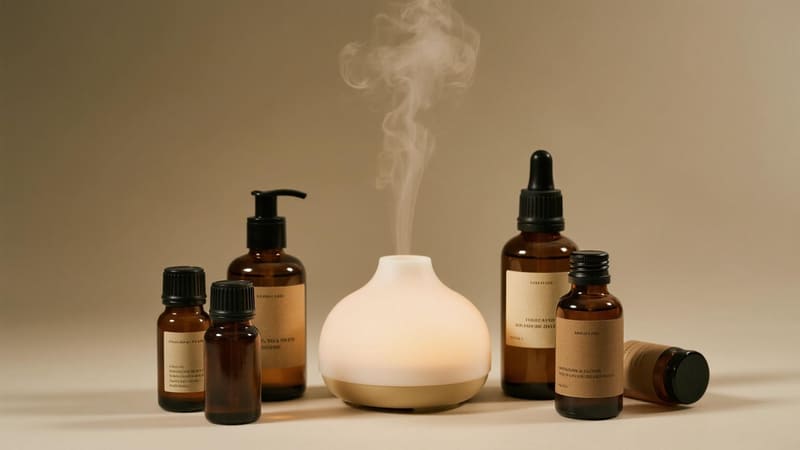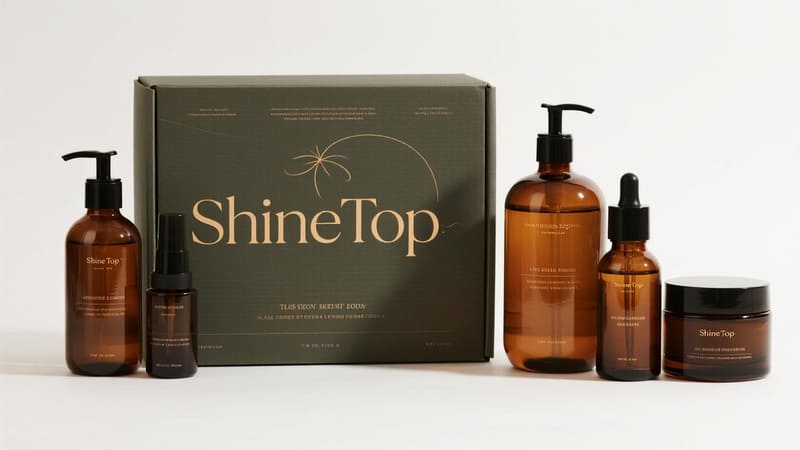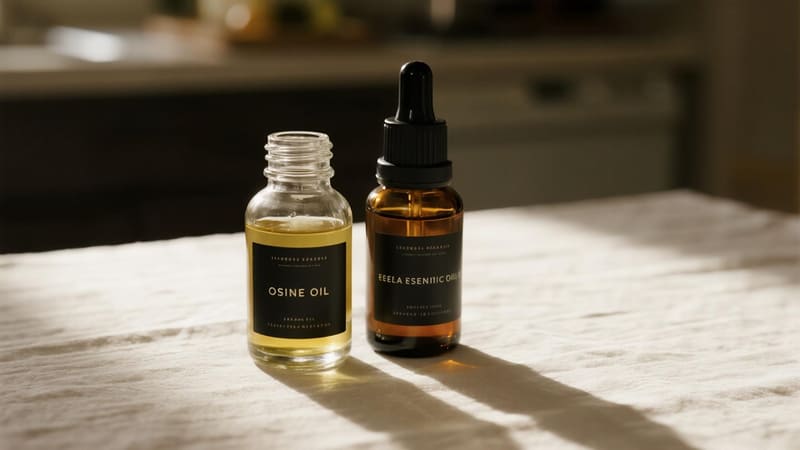You’ve likely seen sleek metal tins holding lip balms or elegant aluminum tubes for hand creams. Metal offers a distinct look and feel in cosmetic packaging, often conveying luxury, durability, or a vintage charm.
Metal cosmetic packaging refers to primary or secondary packaging components for beauty products made from materials like aluminum, tinplate (tin-coated steel), or sometimes stainless steel. It includes containers such as tins, tubes, cans, caps, and decorative elements, prized for their durability, barrier properties, and premium aesthetic.
Metal brings a unique set of characteristics to cosmetic packaging. As a manufacturer at ShineTop with over two decades of experience, I’ve seen how metal can elevate a brand’s image and provide excellent product protection. Let’s delve into what defines metal cosmetic packaging and its role in the industry.
What is a Metal Packaging?
Before focusing specifically on cosmetics, it’s helpful to understand metal packaging in a broader sense. This provides context for its applications in the beauty world.
Metal packaging, in general, refers to containers and closures made from metals such as steel (including tinplate and tin-free steel) and aluminum. It’s widely used across various industries (food, beverage, chemical, cosmetics) for its strength, barrier properties, and recyclability.
Metal packaging is a stalwart in the packaging world, known for its robustness and protective qualities. Its use spans far beyond just cosmetics.
Key Characteristics of Metal Packaging:
-
Strength and Durability:
- Metal containers are highly resistant to impact, puncture, and compression, providing excellent physical protection for the contents.
-
Superior Barrier Properties:
- Metal offers an almost perfect barrier against light, oxygen, moisture, and other contaminants. This helps preserve product freshness, extend shelf life, and prevent spoilage or degradation.
-
Temperature Tolerance:
- Metal can withstand a wide range of temperatures, making it suitable for products that might be exposed to varying conditions or require processes like sterilization.
-
Recyclability:
- Steel and aluminum are highly recyclable materials. They can be recycled multiple times without significant loss of quality, contributing to a circular economy. Metal recycling rates are generally high in many regions.
-
Versatility in Shape and Size:
- Metals can be formed into various shapes and sizes, from small tins and tubes to large drums and cans.
-
Printability and Decorative Potential:
- Metal surfaces can be printed, embossed, or decorated in numerous ways, allowing for attractive branding.
In the context of cosmetics, these general properties are leveraged to create packaging that is both functional and aesthetically pleasing. For example, the excellent barrier properties are ideal for preserving sensitive formulations.
What is the Best Material for Cosmetic Packaging?
The quest for the "best" packaging material is ongoing in the cosmetics industry. While metal offers many advantages, it’s one of several options, each with its own strengths and weaknesses.
There’s no single "best" material for all cosmetic packaging; the ideal choice depends on product compatibility, brand aesthetics, cost, functionality, and sustainability goals. Common materials include plastics (PET, PP, PE), glass, metal (aluminum, tin), and paper/paperboard, each suited to different needs.
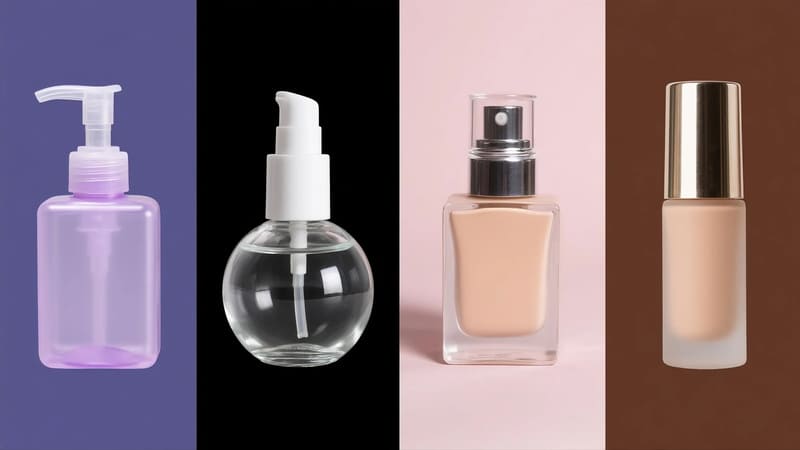
The "best" material is always relative to the specific requirements of the cosmetic product and the brand’s objectives. Metal shines in certain applications but might not be optimal for others.
Comparing Metal to Other Common Cosmetic Packaging Materials:
| Feature | Metal (Aluminum/Tin) | Glass | Plastics (PET, PP, etc.) | Paper/Paperboard |
|---|---|---|---|---|
| Barrier Properties | Excellent (light, oxygen, moisture) | Excellent (light if dark, oxygen, moisture) | Fair to Good (varies by plastic type) | Poor (unless lined/coated) |
| Durability | Very Good (dent resistant, not breakable) | Fair (breakable) | Good (shatter-resistant) | Fair (can crush/tear) |
| Weight | Lightweight (aluminum) to Moderate (tin) | Heavy | Lightweight | Very Lightweight |
| Luxury Perception | Good to Excellent | Excellent | Varies (can be premium or basic) | Varies (can be rustic or premium) |
| Cost | Moderate to High | Moderate to High | Low to Moderate | Low to Moderate |
| Recyclability | Excellent (widely recycled) | Excellent (widely recycled) | Varies (PET/HDPE good, others less so) | Good (if clean and uncoated) |
| Formability | Good (tubes, tins, cans, caps) | Good (bottles, jars) | Excellent (diverse shapes) | Good (boxes, tubes) |
| Product Compatibility | Good (often needs internal lining) | Excellent (inert) | Good (potential for leaching/sorption) | Limited (for dry or lined products) |
When Metal Might Be "Best":
- For products requiring a high degree of protection from light and air (e.g., certain balms, salves, or anhydrous formulas).
- When a premium, durable, or vintage aesthetic is desired (e.g., luxury tins, classic aluminum tubes).
- For squeezable tubes where a good barrier and complete evacuation are needed (collapsible aluminum tubes).
- For aerosol products (aluminum or steel cans).
Anna, a cosmetics manufacturer in Thailand, uses our aluminum tins for her solid perfumes and lip balms. She chose metal for its protective qualities and the slightly retro, high-quality feel it gives these particular products in her line.
What are the Disadvantages of Metal Packaging?
While metal packaging offers significant benefits, it also has some drawbacks that brands need to consider when making their packaging choices.
Disadvantages of metal packaging can include higher initial cost compared to some plastics, potential for denting (especially with thinner aluminum), the need for internal coatings or linings to prevent reaction with certain products, and sometimes a heavier weight than plastic (though aluminum is light). It can also have limitations in terms of complex shapes compared to injection-molded plastic.
No packaging material is perfect, and metal is no exception. Understanding its limitations is important.
Potential Drawbacks of Metal Packaging:
-
Cost:
- Generally, metal packaging (especially custom-designed or highly decorated pieces) can be more expensive per unit than basic plastic containers or simple paperboard boxes. Raw material costs and manufacturing processes contribute to this.
-
Denting:
- While durable, metal containers, particularly those made from thinner gauge aluminum or tinplate, can be prone to denting if mishandled during shipping or by the consumer. This can affect the aesthetic appeal.
-
Potential for Corrosion/Reaction (if unlined):
- Some cosmetic formulations, especially those that are highly acidic, alkaline, or contain certain chemicals, can react with bare metal over time, leading to corrosion of the container or degradation of the product.
- To prevent this, metal containers for cosmetics (like aluminum tubes or tins) are often internally lined with a protective coating (e.g., epoxy resin). The safety and compatibility of these linings are crucial.
-
Weight (for Steel/Tinplate):
- While aluminum is very lightweight, packaging made from tinplate (steel) can be heavier than comparable plastic options, potentially increasing shipping costs.
-
Shape Limitations:
- While metal can be formed into many shapes, achieving highly complex, intricate, or sculptural forms is often easier and more cost-effective with injection-molded plastics. Metal forming typically involves processes like drawing, stamping, or extrusion.
-
Heat/Cold Transference:
- Metal conducts heat and cold well. This means a metal container can feel very cold or hot to the touch if the product or environment is at an extreme temperature. This is usually a minor issue for cosmetics.
-
Noise:
- Sometimes, metal components (like caps on metal tubes) can create a screeching sound when opened or closed, which might be perceived negatively by some consumers. Lubrication or design considerations can mitigate this.
Mohammed, my client from Iraq, uses glass bottles with custom metal caps for some of his luxury sets. While the metal caps add a premium touch, we had to ensure the threading was precise to avoid any unpleasant sounds and that the internal liner in the cap was compatible with the product.
What are the Different Types of Metal Packaging?
Metal packaging is not a monolithic category. It encompasses a variety of forms and specific metal types, each suited to different products and applications within the cosmetic industry and beyond.
Different types of metal packaging include aluminum containers (tubes, bottles, cans, tins, caps), tinplate containers (tins, cans, closures), and sometimes stainless steel components (for luxury items or dispensing mechanisms). Each type offers specific advantages in terms of formability, weight, and cost.
Understanding the different types of metal packaging available helps in selecting the most appropriate option for your cosmetic product.
Common Types of Metal Packaging in Cosmetics:
-
Aluminum Packaging:
- Collapsible Tubes: Very common for hand creams, ointments, hair dyes, and some food products. Offer excellent barrier properties and allow for near-complete product evacuation. Often internally lined.
- Bottles & Cans (Aerosol & Non-Aerosol): Used for hairsprays, dry shampoos, body sprays, and some liquid foundations or skincare mists. Lightweight and seamless.
- Tins & Jars: Round, square, or custom-shaped tins for balms, solid perfumes, loose powders, or candles. Often feature screw-top or slip-on lids.
- Caps & Closures: Aluminum caps provide a premium look and feel for glass or plastic bottles and jars.
- Decorative Components: Aluminum can be used for collars, shoulders, or decorative plaques on other packaging types.
-
Tinplate Packaging (Tin-Coated Steel):
- Tins & Cans: Similar to aluminum tins but generally more robust and potentially more cost-effective for certain sizes/shapes. Common for balms, waxes, and sometimes as secondary packaging (gift tins).
- Closures: Lug caps or continuous thread caps for glass jars.
- Note: "Tin" is often used colloquially to refer to both tinplate and aluminum containers.
-
Tin-Free Steel (TFS):
- Similar to tinplate but uses a chromium coating instead of tin. Less common in primary cosmetic packaging but can be used for some cans or components.
-
Stainless Steel Packaging:
- Components: Less common for entire containers due to cost but used for high-end reusable packaging, rollerballs in applicators, or premium dispensing mechanisms.
- Properties: Highly durable, excellent corrosion resistance, very premium feel.
Here’s a quick summary:
| Metal Type | Common Cosmetic Packaging Forms | Key Advantages |
|---|---|---|
| Aluminum | Tubes, Bottles, Aerosol Cans, Tins, Caps, Decorative Parts | Lightweight, excellent barrier, highly recyclable, formable |
| Tinplate (Steel) | Tins, Cans, Closures | Strong, good barrier, cost-effective for some uses, recyclable |
| Stainless Steel | Rollerballs, Dispenser Parts, Luxury Reusable Components | Extremely durable, corrosion-resistant, premium feel |
At ShineTop, we have extensive experience manufacturing custom aluminum and tinplate packaging components. Our largest bottle post-processing and surface treatment facility in South China allows us to offer a wide range of decorative finishes on these metal parts, from anodizing and brushing to custom printing.
Conclusion
Metal cosmetic packaging, primarily using aluminum and tinplate, offers a compelling blend of durability, superior product protection, and a premium aesthetic. While it has disadvantages like potential denting and the need for internal linings, its recyclability and versatility in forms like tubes, tins, and caps make it a valuable option for many cosmetic brands seeking to enhance their product’s appeal and shelf life.

